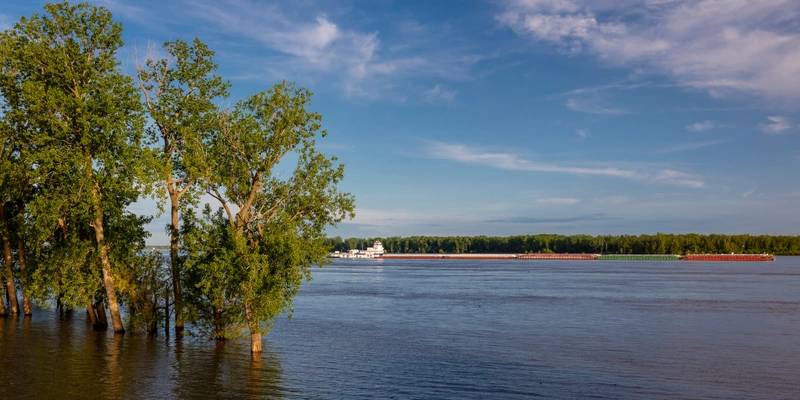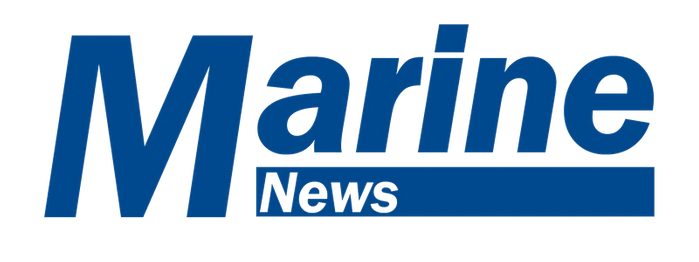Column
Inland Ports and Terminals
Inland River Transportation Caucus within the US Congress
An Inland River Transportation Caucus could help inland river transportation interests that are often misunderstood and greatly undervalued.
By Aimee Andres, Executive Director, Inland Rivers, Ports and Terminals
For anyone doing business on the inland river transportation system, the goal is to keep the rivers open for business, the barges moving and the landside facilities efficient in order to keep America’s supply chain strong.
To accomplish this, it takes the federal agencies that are charged with operating and maintaining inland rivers to have the support of congress, the funding congress allocates and legislation passed by congress. Legislation affects policy, regulation and ultimately the maintenance of the system so understanding how this impacts the transportation providers and supply chain is important.
The legislative interests of the inland river transportation stakeholders are misunderstood, greatly undervalued and often times overlooked. Why? There is an imbalance of representation on congressional committees regarding coastal transportation, versus inland.
Congress, Committees and Caucuses
After elected within their respective districts or states, federal House and Senate members seek out committee assignments which they are interested serving, and that bring value to their constituents back home. This could include Transportation and Infrastructure, Appropriations, Armed Services and so much more. Typically, within those committees, there are subcommittees. This may include the Transportation & Infrastructure’s Subcommittee on Coast Guard and Maritime Transportation or the Energy and Water Development Subcommittee of Appropriations. Within the scope of several congressional committees is development and introduction of legislation that impacts the nation’s supply chain, including river transportation and the stakeholders that use it.
Some of these congressional members form a caucus, or group of members of congress that meet to pursue common legislative objectives. There are hundreds of caucuses already formed, such as the Natural Gas Caucus, the Fertilizer Caucus and the Mississippi River Caucus. Caucuses provide a platform for bipartisan collaboration on issues that affect the particular caucus topic, and it provides supplemental information for caucus members who may also serve on a particular committee charged with oversight on that topic.
For example, many inland ports and terminals carry our nation’s energy products (coal, ethanol, petroleum and liquefied natural gas, or LNG). Transportation of those commodities relies on legislation and policy that contribute to healthy growth and sound practices. The House Transportation and Infrastructure’s subcommittee on the U.S. Coast Guard and Maritime Transportation may seek input from the Congressional Natural Gas Caucus to understand the role LNG can play to provide the nation with a stabile fuel source for combustible engines, the storage of the fuel source in certain applications and the safety of storing the source in different circumstances.

In my pursuit to promote the value of the inland river transportation system to users and policymakers and encourage a viable solution to the freight transportation crisis, it has become apparent that there is an imbalance of committee members representing inland interests on several of the committees charged with overseeing legislation that impacts these stakeholders.
Of the 50 U.S. states, the river system touches 38 of those. On the House Transportation and Infrastructure committee, there are 61 members (2021 roster). Of those, 43 represent non-inland interest and only 18 represent inland interest. Further, the T&I’s subcommittee on Coast Guard and Maritime Transportation, there are 12 non-inland members, but only two members representing inland interests. This is a big deal.
The U.S. Coast Guard marks safe and reliable maritime routes and navigation channels. The Coast Guard relies on adequate funding in order to fulfill that activity. Assets used to fulfill that are very different when marking a coastal maritime route as compared to the assets used to mark a navigation channel on the river system.
Here’s another example. The House Appropriations Committee has 44 members. The subcommittee on Transportation, Housing and Urban Development has 12 non-inland members but only two members representing inland interests. Further, the subcommittee on Energy and Water Development only has three inland-interest representing members of the 44 on the full committee.
For the supply chain to be resilient and sustainable, the inland river transportation needs bipartisan and bicameral representation to make recommendations to committees that focus on maritime transportation. Via an Inland River Transportation Caucus, members of the caucus can share and be informed of all matters affecting river transportation and strongly advocate for common legislative objectives that affect inland interests and to support the inland-representing members of each congressional committee.
An integrated, comprehensive and collaborative approach to inland river transportation legislation, development and protection is critical to the environmentally sound and efficient use of our nation’s river transportation. A balanced approach, recognizing the importance inland river transportation has on sustainable economic development and economic security will promote the quality of life for all Americans. This can be remedied by creating an inland river transportation caucus to bring forth ideas to preserve a resilient inland river transportation system, and stimulate economic growth.
About the Author:
Aimee Andres is Executive Director of the Inland Rivers, Ports and Terminals (IRPT), a trade association for the nation’s inland waterway, port and terminal professionals. Representing the interests of members in each river basin, Andres encourages continued cooperation with local, state and federal authorities, as well as other waterway associations to promote the value of the inland waterway system.
